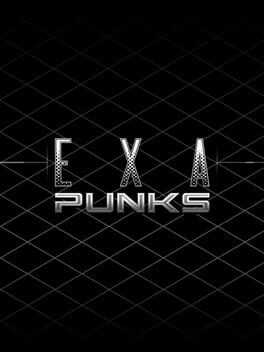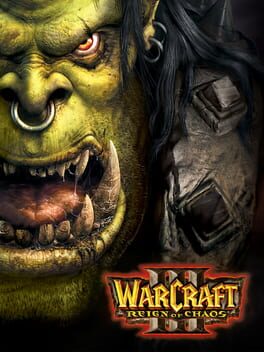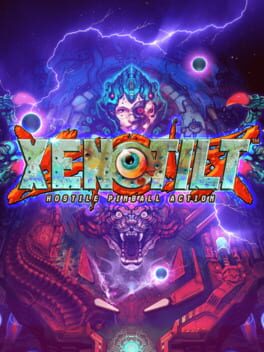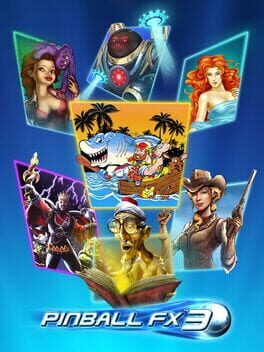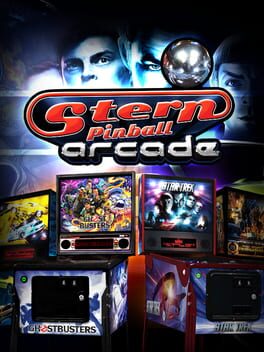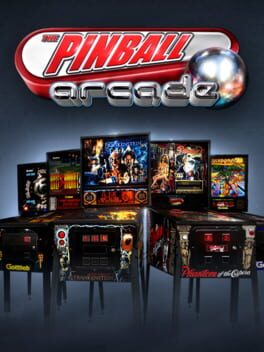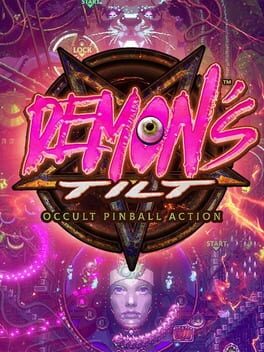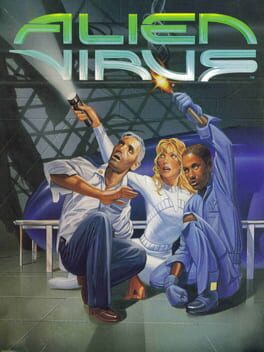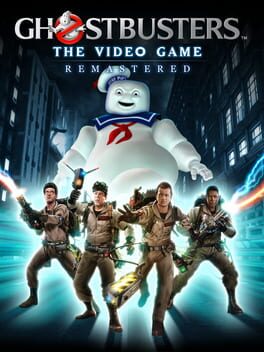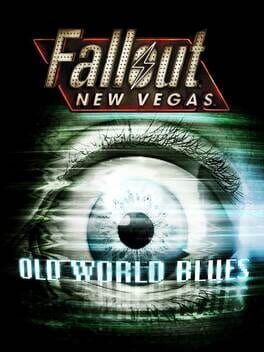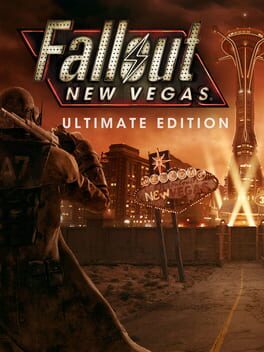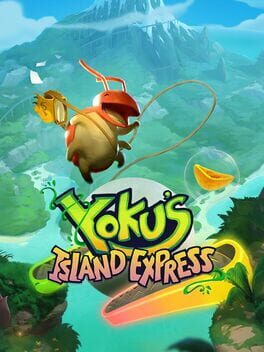Klaustrix
BACKER
The ideal follow up to an already impressive game that adds a slew of new content, new gameplay, new challenges, and a heaping helping of new stories to explore the aftermath of of WC3's events.
TFT is great example of how a dev team can really go to town once they've mastered the tools. This game expands on all the mechanics and gameplay, introduces new armies, units, and items, and then dumps 4 new campaigns on top of all that. Through these stories we explore the fates of Illidan Stormrage and the Naga, Arthas and the Lich King, the Blood Elves, Sylvanas and the dreadlords, and then finally the bonus 'Founding of Durotar' campaign. It's a gigantic amount of content and if you've played WoW this really sets the stage for how things start out in vanilla through to Wrath.
The stories are well written and have the same great character writing as the base game but uniquely TFT is an epilogue for the antagonists of WC3, exploring how they recover from the finale. Each of the four stories adds all new depth to the various factions and fills in some gaps left from the core game's narrative. I found it dragged a bit in the undead campaign (the starting gameplay is still very base-building focused) but thankfully the devs keep it fresh by exploring new game modes and scenarios with stealth, dungeon exploration, capture the flag, king of the hill, naval missions, aerial missions, you name it. Not to mention a variety of secret missions to discover. This variety definitely gives FTF a whole different feeling from the base game while building on what's come before.
For the new armies, I was a disappointed to find the blood elves are a reskin of humans and elves combined - especially as the demon's army is right there but you never seem to get access to it. The Naga at least are an all new snakeman race that are powerful, slow, and expensive with an aztec theme. They have the ability to cross shallow water giving them some unique movement, but every army has something new to play with between new units and buildings. There's also a host of new hero characters that the story is told through.
The final campaign - The Founding of Durotar - is a 3 part story built from inter-linked sandbox areas that make the game play more akin to Diablo. It actually feels like playing a proto world of warcraft as you venture into the wilds, kill mob packs along the way, do quests, kill bosses with raid-style mechanics, and collect equipment to enhance your heroes. While this gives the game a whole new feeling it's also jarringly slower paced and they aren't afraid to kill you since your heroes now instantly respawn at a resurrection stone. This often leads to fairly drawn out battles of attrition as you throw your units at problems until its solved. It creates a very different tone from WC3 and it's hard to say if it's 'better', so your mileage may vary.
Overall, WC3 built a fantastic engine and TFT is very much the devs using that engine as a playground to experiment with. You can see much of the WoW DNA taking shape through the lean into open world sandbox design alongside the story beats setting up the world politics for a more deep and nuanced setting. If you liked the base game this is an large extra serving of that with all kinds of new ways to enjoy it - but you may not enjoy every new flavour.
TFT is great example of how a dev team can really go to town once they've mastered the tools. This game expands on all the mechanics and gameplay, introduces new armies, units, and items, and then dumps 4 new campaigns on top of all that. Through these stories we explore the fates of Illidan Stormrage and the Naga, Arthas and the Lich King, the Blood Elves, Sylvanas and the dreadlords, and then finally the bonus 'Founding of Durotar' campaign. It's a gigantic amount of content and if you've played WoW this really sets the stage for how things start out in vanilla through to Wrath.
The stories are well written and have the same great character writing as the base game but uniquely TFT is an epilogue for the antagonists of WC3, exploring how they recover from the finale. Each of the four stories adds all new depth to the various factions and fills in some gaps left from the core game's narrative. I found it dragged a bit in the undead campaign (the starting gameplay is still very base-building focused) but thankfully the devs keep it fresh by exploring new game modes and scenarios with stealth, dungeon exploration, capture the flag, king of the hill, naval missions, aerial missions, you name it. Not to mention a variety of secret missions to discover. This variety definitely gives FTF a whole different feeling from the base game while building on what's come before.
For the new armies, I was a disappointed to find the blood elves are a reskin of humans and elves combined - especially as the demon's army is right there but you never seem to get access to it. The Naga at least are an all new snakeman race that are powerful, slow, and expensive with an aztec theme. They have the ability to cross shallow water giving them some unique movement, but every army has something new to play with between new units and buildings. There's also a host of new hero characters that the story is told through.
The final campaign - The Founding of Durotar - is a 3 part story built from inter-linked sandbox areas that make the game play more akin to Diablo. It actually feels like playing a proto world of warcraft as you venture into the wilds, kill mob packs along the way, do quests, kill bosses with raid-style mechanics, and collect equipment to enhance your heroes. While this gives the game a whole new feeling it's also jarringly slower paced and they aren't afraid to kill you since your heroes now instantly respawn at a resurrection stone. This often leads to fairly drawn out battles of attrition as you throw your units at problems until its solved. It creates a very different tone from WC3 and it's hard to say if it's 'better', so your mileage may vary.
Overall, WC3 built a fantastic engine and TFT is very much the devs using that engine as a playground to experiment with. You can see much of the WoW DNA taking shape through the lean into open world sandbox design alongside the story beats setting up the world politics for a more deep and nuanced setting. If you liked the base game this is an large extra serving of that with all kinds of new ways to enjoy it - but you may not enjoy every new flavour.
2018
Exapunks takes the broader mechanics of assembly coding and turns it into a puzzle game. At the same time it weaves together a cute cyberpunk narrative that has you hacking body parts, government servers, and nuclear reactors.
While most programming games tend to have you running command lines and work at the front end of computing, Exapunks goes into the metal and has you programming little robots to perform functions akin to assembly instructions. The concept is clever and the unique approach works well. The visuals are sharp and have a cassette futurism feel that looks wonderful, and the music has that classic Zachtronics 'music to think to' vibe.
For the moment to moment gameplay each mission has a clear objective and you program one or more bots to manipulate files and data using 4 registers with different limitations. It's these limitations that encourage you to find creative and compact programming solutions. You're scored based on the size of the code, number of bots, and how your code takes to solve the problem. This can give you clear insights, such as when you see that most people made the code just a little more efficient encouraging you to go back and optimise.
The gameplay is mixed with a pair of real PDF 'zines which teach you the finer details of how tech works in this world and gradually introduces more complex ways you can instruct the bots. The multimedia approach is fun and adds to the immersion, though you have to be somewhat bought in to sit down and read what is basically an series of instruction manual snipets.
Personally Exapunks does a lot that I enjoy, the story is a bit cliche but it's a fun excuse for the interesting and varied challenges thrown at you - the different themes and secrets hidden add some nice depth. Zachsoft games can be intimidating but this is a good place for beginners to start and if you're an experienced programmer you're still going to learn something about optimisation. Smart, stylish, and good fun.
While most programming games tend to have you running command lines and work at the front end of computing, Exapunks goes into the metal and has you programming little robots to perform functions akin to assembly instructions. The concept is clever and the unique approach works well. The visuals are sharp and have a cassette futurism feel that looks wonderful, and the music has that classic Zachtronics 'music to think to' vibe.
For the moment to moment gameplay each mission has a clear objective and you program one or more bots to manipulate files and data using 4 registers with different limitations. It's these limitations that encourage you to find creative and compact programming solutions. You're scored based on the size of the code, number of bots, and how your code takes to solve the problem. This can give you clear insights, such as when you see that most people made the code just a little more efficient encouraging you to go back and optimise.
The gameplay is mixed with a pair of real PDF 'zines which teach you the finer details of how tech works in this world and gradually introduces more complex ways you can instruct the bots. The multimedia approach is fun and adds to the immersion, though you have to be somewhat bought in to sit down and read what is basically an series of instruction manual snipets.
Personally Exapunks does a lot that I enjoy, the story is a bit cliche but it's a fun excuse for the interesting and varied challenges thrown at you - the different themes and secrets hidden add some nice depth. Zachsoft games can be intimidating but this is a good place for beginners to start and if you're an experienced programmer you're still going to learn something about optimisation. Smart, stylish, and good fun.
A simpler time, a beautifully well rounded RTS, and the rise of hero-based games. It's such a dramatic contrast seeing where the Warcraft series came from compared to where it has ended up. But if there's one thing WC3 shares with its developer (at the time) it's that both have a lot of character.
The visuals of WC3 are surprisingly toyetic, the cartoonish scale and proportion of everything feels like real miniatures running around a table top. Its this miniature design and the animated style that gives the game its signature look, one which hasn't gone out of style albeit more refined these days. There's a lot of charm in these old chunky polygon character models though, heads flapping almost like muppets. This contrasts with the serious tone of the story and voice acting that takes the toys and does something deeper with them. Having played WoW I was surprised how much more I cared about various characters after finishing their stories. Thrall's quest is so compelling that I ended up with a whole different perspective on him now I know his past, and his struggles to be the most diplomatic of the faction leaders.
The story follows the wartorn races of Azeroth as they brace for a prophesised doom. This introduces us to the Humans, Orcs, Undead, and Elf races each with their own campaigns to tell their part of the story. Each army has unique units, mechanics, and tactics for gameplay plus it's own quirks, but they're all structured very similarly with buildings generally serving the same purpose (upgrades, infantry, aerial units etc.). Still the differences are enough to make each of the armies feel distinct and switching between them in the campaign keeps gameplay fresh.
The mission variety is great as you go from base building scenarios to mini adventures that feel closer to diablo. The base building tends to teach you the various army's units and how to make use of them and their upgrades, tying in as a kind of long form tutorial for the multiplayer end game. The hero and unit missions meanwhile feel like small D&D scenarios, tightly designed and without much room for error. The heightened stakes give it a very different play feel that compliments the story nicely letting the game explore more nuanced and miniature scale story beats.
The hero characters leading each mission add another layer of complexity. Most RTS games have their leader units but Warcraft made them larger than life characters, added the RPG element to them, and gave them an inventory. This would give rise to hero-genre games such as hero shooters and MOBAs, but you can feel that DNA residing in WC3 as you play the linear missions without bases, leading small parties rather than just cheering on warbands as they clash.
Warcraft 3 doesn't feel like a company establishing the set piece that will launch their gaming empire and cement the Warcraft brand. It just feels like a group of devs making stuff up, doing what looks cool, and having fun with it. From a time when the company was more humble and wholesome, before they turned into the mechanical conglomerate they are today churning out monetisation. The game feels rough and scribbled, lacking that corporate polish we're so used to now days, making it feel all the more hand-wrought. This again contrasts with their stunning cinematic animations proving that Warcraft works at high and low quality, large and small scale, because it has great core writing, design, and faithfulness to its world building while offering nothing more but vague allusions to what the setting holds. There's a charming potential to that. You can see why people would have been hyped to see the whole world realised via WoW. Overall a fun and charming game that tells an exciting story and leaves you with an amazing online multiplayer.
The visuals of WC3 are surprisingly toyetic, the cartoonish scale and proportion of everything feels like real miniatures running around a table top. Its this miniature design and the animated style that gives the game its signature look, one which hasn't gone out of style albeit more refined these days. There's a lot of charm in these old chunky polygon character models though, heads flapping almost like muppets. This contrasts with the serious tone of the story and voice acting that takes the toys and does something deeper with them. Having played WoW I was surprised how much more I cared about various characters after finishing their stories. Thrall's quest is so compelling that I ended up with a whole different perspective on him now I know his past, and his struggles to be the most diplomatic of the faction leaders.
The story follows the wartorn races of Azeroth as they brace for a prophesised doom. This introduces us to the Humans, Orcs, Undead, and Elf races each with their own campaigns to tell their part of the story. Each army has unique units, mechanics, and tactics for gameplay plus it's own quirks, but they're all structured very similarly with buildings generally serving the same purpose (upgrades, infantry, aerial units etc.). Still the differences are enough to make each of the armies feel distinct and switching between them in the campaign keeps gameplay fresh.
The mission variety is great as you go from base building scenarios to mini adventures that feel closer to diablo. The base building tends to teach you the various army's units and how to make use of them and their upgrades, tying in as a kind of long form tutorial for the multiplayer end game. The hero and unit missions meanwhile feel like small D&D scenarios, tightly designed and without much room for error. The heightened stakes give it a very different play feel that compliments the story nicely letting the game explore more nuanced and miniature scale story beats.
The hero characters leading each mission add another layer of complexity. Most RTS games have their leader units but Warcraft made them larger than life characters, added the RPG element to them, and gave them an inventory. This would give rise to hero-genre games such as hero shooters and MOBAs, but you can feel that DNA residing in WC3 as you play the linear missions without bases, leading small parties rather than just cheering on warbands as they clash.
Warcraft 3 doesn't feel like a company establishing the set piece that will launch their gaming empire and cement the Warcraft brand. It just feels like a group of devs making stuff up, doing what looks cool, and having fun with it. From a time when the company was more humble and wholesome, before they turned into the mechanical conglomerate they are today churning out monetisation. The game feels rough and scribbled, lacking that corporate polish we're so used to now days, making it feel all the more hand-wrought. This again contrasts with their stunning cinematic animations proving that Warcraft works at high and low quality, large and small scale, because it has great core writing, design, and faithfulness to its world building while offering nothing more but vague allusions to what the setting holds. There's a charming potential to that. You can see why people would have been hyped to see the whole world realised via WoW. Overall a fun and charming game that tells an exciting story and leaves you with an amazing online multiplayer.
A stylish looking cyberpunk pinball game with bullet hell mechanics and a ton of style - not a great place for beginners but fun and engaging for those with experience if you like Wiznwar's over-the-top visuals and mechanical complexity.
While Demon's Tilt goes in a gothic horror direction, Xenotilt goes for an 80's neon cyberpunk aesthetic. With smaller paddles and more intricate mechanics I found XT much harder to get to grips with than DT, and generally more difficult to follow. The camera is zoomed out more to accommodate the large board and it's many elements which can make tracking the ball a bit trickier and makes shots all the more precise.
I've only played this a little as a beginner but it feels like there's a lot of potential awaiting those with the skill to master it. The ability to shoots guns by cradling the ball and then upgrading those guns like a shoot-em-up is wild and leans into the experimental / non-traditional pinball gameplay I'm here for. Hope to return to it once I'm a bit stronger at the basics.
While Demon's Tilt goes in a gothic horror direction, Xenotilt goes for an 80's neon cyberpunk aesthetic. With smaller paddles and more intricate mechanics I found XT much harder to get to grips with than DT, and generally more difficult to follow. The camera is zoomed out more to accommodate the large board and it's many elements which can make tracking the ball a bit trickier and makes shots all the more precise.
I've only played this a little as a beginner but it feels like there's a lot of potential awaiting those with the skill to master it. The ability to shoots guns by cradling the ball and then upgrading those guns like a shoot-em-up is wild and leans into the experimental / non-traditional pinball gameplay I'm here for. Hope to return to it once I'm a bit stronger at the basics.
2017
FX's schtick is that their tables are fully digital original creations allowing for some unusual ball movement, rendered characters to wander around the table, and the table itself to transform with elaborate animations and pieces adding to the usual pinball experience. The tables aren't for everyone, but they are a lot more engaging and dynamic - albeit in obvious and unimaginative ways.
I picked up a handful of different tables to try out and while the default FX ones are serviceable, the real effort has clearly gone into the licensed tables. I was surprised just how intricate some were - such as the Fallout table that lets you make a character, has an inventory and currency, and features a variety of missions and faction quests to explore as you play. Similarly the Back to the Future table's parts and mini-games adjust depending on which time you end up playing in. It isn't a perfect formula however as there were many tables (the Balls of Glory pack especially) that just didn't work for me - just a lot of lazy references and generic gameplay.
As much as I do enjoy the gimmicks and mechanics on these tables, my feeling is that they are aimed more at pinball lovers than fans of any given IP. They could go way further with these ideas, have the table itself morph and change, add more layers and depth, but they clearly want this to be pinball+. The old game with sci-fi looking tables. It works for what it is and makes for a different style of play compared to old school boards, but being aimed at a niche audience makes the result an acquired taste.
I picked up a handful of different tables to try out and while the default FX ones are serviceable, the real effort has clearly gone into the licensed tables. I was surprised just how intricate some were - such as the Fallout table that lets you make a character, has an inventory and currency, and features a variety of missions and faction quests to explore as you play. Similarly the Back to the Future table's parts and mini-games adjust depending on which time you end up playing in. It isn't a perfect formula however as there were many tables (the Balls of Glory pack especially) that just didn't work for me - just a lot of lazy references and generic gameplay.
As much as I do enjoy the gimmicks and mechanics on these tables, my feeling is that they are aimed more at pinball lovers than fans of any given IP. They could go way further with these ideas, have the table itself morph and change, add more layers and depth, but they clearly want this to be pinball+. The old game with sci-fi looking tables. It works for what it is and makes for a different style of play compared to old school boards, but being aimed at a niche audience makes the result an acquired taste.
2016
It's hard to say what's going on with this one. It uses the same engine as Pinball Arcade but likely exists as a separate entry in steam to renew their lost table licenses? It has a much worse UI and lots more bugs than PBA so most of the fan base is pissed at its existence - especially since many think it implies that they'll make you re-buy all the tables you already bought as DLC for PBA (though DLC for PBA worked on SPA).
Right now just seems like a terrible time to get into simulated pinball. Licenses are being negotiated, the software is up in the air, and there's no telling which big brand will launch the standard platform for the next 10 years.
This title at least seems like an objective downgrade to PBA. If you play both you at least get access to 2 sets of free tables, but that's the only benefit atm.
Right now just seems like a terrible time to get into simulated pinball. Licenses are being negotiated, the software is up in the air, and there's no telling which big brand will launch the standard platform for the next 10 years.
This title at least seems like an objective downgrade to PBA. If you play both you at least get access to 2 sets of free tables, but that's the only benefit atm.
2012
Stern is one of the biggest pinball machine manufacturers and the idea of this is to let you play simulated tables, sold in packs as DLC. The issue is that it launched in 2013 and many licenses have run out. There's a couple decent tables worth picking up but you're just picking at scraps at this point.
The simulation itself is mostly high quality. If you're familiar with Visual Pinball it's along the same lines just with a professional UI and high quality assets. The tables are re-created in complete detail and the physics work very well. The tables left however are quite hit and miss. I grabbed Stern pack 1 and 2 which provided 11 tables total, but I only really enjoyed 2 of them - the Ghostbusters table and Frankenstein.
The Ghostbusters (2016) table is my favourite as it has a lot of simple functions, a lot of cute gimmicks, the DMD animations are great, and all the sound effects mix nicely. It's easy to pick up and hard to master but very replayable since there's a lot of features to explore, and lets you 're-enact' scenes from the film in so far as shooting targets lets you. The whole experience has a lot of charm.
Frankenstein, Flight 2000, and Phantom of the Opera were interesting boards, not too difficult but fun to play. I had bought pack 2 for Starship Troopers and Star Trek but found both very underwhelming and overly simple. Last Action Hero was also disappointing as the game has very low quality audio clips and featured lines that weren't memorable at all - just seemed to totally miss the mark.
Since the base game is free there's a couple of tables you can play for free that change each week. It's hard to encourage people to buy in when the game is at the end of its life cycle but there are tables you aren't going to find legally elsewhere. The DLC is compatible with the new release 'Stern's Pinball Arcade' (way worse UI, and alternate free games from the same small list). It's possible SPA will replace PBA going forward but it has the exact same licenses so it's basically the worst time to get into pinball simulation.
The simulation itself is mostly high quality. If you're familiar with Visual Pinball it's along the same lines just with a professional UI and high quality assets. The tables are re-created in complete detail and the physics work very well. The tables left however are quite hit and miss. I grabbed Stern pack 1 and 2 which provided 11 tables total, but I only really enjoyed 2 of them - the Ghostbusters table and Frankenstein.
The Ghostbusters (2016) table is my favourite as it has a lot of simple functions, a lot of cute gimmicks, the DMD animations are great, and all the sound effects mix nicely. It's easy to pick up and hard to master but very replayable since there's a lot of features to explore, and lets you 're-enact' scenes from the film in so far as shooting targets lets you. The whole experience has a lot of charm.
Frankenstein, Flight 2000, and Phantom of the Opera were interesting boards, not too difficult but fun to play. I had bought pack 2 for Starship Troopers and Star Trek but found both very underwhelming and overly simple. Last Action Hero was also disappointing as the game has very low quality audio clips and featured lines that weren't memorable at all - just seemed to totally miss the mark.
Since the base game is free there's a couple of tables you can play for free that change each week. It's hard to encourage people to buy in when the game is at the end of its life cycle but there are tables you aren't going to find legally elsewhere. The DLC is compatible with the new release 'Stern's Pinball Arcade' (way worse UI, and alternate free games from the same small list). It's possible SPA will replace PBA going forward but it has the exact same licenses so it's basically the worst time to get into pinball simulation.
2019
A fully simulated table akin to FX style tables, but with a demonic pixel art theme that looks stunning. A fun and engaging introduction to video pinball making use of an elaborate 3-tier board.
At first glance Demon's Tilt looks overwhelming and while there's a ton of intricate moving parts, once broken down it's simple to follow. There's 3 sections: top, middle, and bottom each with their own boss to fight by striking it with the ball. Each section also has a lane to shoot which activates a challenge (aka ritual) and for each challenge you're granted a letter that spells out the section's word (hermit, arcane, and zodiak). Completing a word is big points but beyond the core mechanics there's also a multiball, various jackpots, the anvil multipliers, and lots of little enemies to mow down. You also generate magic which can trigger the ball to move along automated paths that assist play.
This was my first real introduction to pinball and between the art style and the intricate gameplay it was a lot of fun. You start out just playing, taking in all the lighting effects and points racking up, learning to just reactively hit the ball. But it isn't long before you're learning how to shoot at specific things, how to use the tilt, and reading on the board mechanics. After a week my score went from less than a million to over 50 mil - small numbers compared to the billions on the leader boards but it's nice to go back to a genre which lets you measure your progress.
If you're new I think this makes a fun introduction to pinball. A lot of machines are over-simple for modern gamers but DT gives you plenty to do and it looks great doing it. The 3-tier board certainly makes it stand out with some unique mechanics and effects, but there's no attempt at realism (for better or worse).
At first glance Demon's Tilt looks overwhelming and while there's a ton of intricate moving parts, once broken down it's simple to follow. There's 3 sections: top, middle, and bottom each with their own boss to fight by striking it with the ball. Each section also has a lane to shoot which activates a challenge (aka ritual) and for each challenge you're granted a letter that spells out the section's word (hermit, arcane, and zodiak). Completing a word is big points but beyond the core mechanics there's also a multiball, various jackpots, the anvil multipliers, and lots of little enemies to mow down. You also generate magic which can trigger the ball to move along automated paths that assist play.
This was my first real introduction to pinball and between the art style and the intricate gameplay it was a lot of fun. You start out just playing, taking in all the lighting effects and points racking up, learning to just reactively hit the ball. But it isn't long before you're learning how to shoot at specific things, how to use the tilt, and reading on the board mechanics. After a week my score went from less than a million to over 50 mil - small numbers compared to the billions on the leader boards but it's nice to go back to a genre which lets you measure your progress.
If you're new I think this makes a fun introduction to pinball. A lot of machines are over-simple for modern gamers but DT gives you plenty to do and it looks great doing it. The 3-tier board certainly makes it stand out with some unique mechanics and effects, but there's no attempt at realism (for better or worse).
1995
A very simple and short point and click that suffers from the usual problems of nonsensical puzzle solutions and a couple of pixel perfect objects that are easy to miss.
The plot is like a children's version of Alien but it has some big words and intricate puzzles. There's some death scenes with implied violence but you don't see anything and the xenomorph inspired creatures look like they're made with balloons. There's something almost charming to the 90's pre-rendered backgrounds but even for its time the quality here is a bit janky (Final Fantasy 7 came out 2 years after this).
The gameplay is a bit clunky just because there's a lot of filler rooms and a massive number of red herring items. The world is a decent size to explore but since most of it is padding there's not much value in what you find. The puzzles are also hit and miss, both the times I ran into dead ends it was due to unusual object interactions and poor communication.
This was one of the very first PC games I ever played and it was only for a few minutes at school. It was nice to finally go through it but a shame it ended up being nothing special. It is freeware you can download publicly, but I'd say save your time and just watch a playthrough on youtube.
The plot is like a children's version of Alien but it has some big words and intricate puzzles. There's some death scenes with implied violence but you don't see anything and the xenomorph inspired creatures look like they're made with balloons. There's something almost charming to the 90's pre-rendered backgrounds but even for its time the quality here is a bit janky (Final Fantasy 7 came out 2 years after this).
The gameplay is a bit clunky just because there's a lot of filler rooms and a massive number of red herring items. The world is a decent size to explore but since most of it is padding there's not much value in what you find. The puzzles are also hit and miss, both the times I ran into dead ends it was due to unusual object interactions and poor communication.
This was one of the very first PC games I ever played and it was only for a few minutes at school. It was nice to finally go through it but a shame it ended up being nothing special. It is freeware you can download publicly, but I'd say save your time and just watch a playthrough on youtube.
There's a lot of Ghostbusters games but this one stands apart for it's authenticity - a return of the original cast, the 3rd film script on hand, and gameplay that lets you live the fantasy the movies sell.
Almost all of the original cast are back (minus Rick Moranis and Sigourney Weaver) along with you playing a new recruit. You're lead through a variety of call-backs and scenes from the original film mixed into the new plot. The original voices add a lot to the story but the trainee you play feels shoe-horned into the script. The story ends up being fun in parts and functional overall, but the environments feel very phoned in. They clearly had original ideas but it's like they built them from cheap pre-made parts. The biggest effort went into re-creating locations, objects, and effects from the films.
The entire thing plays out very cinematically and gameplay is very straightforward - you zap the ghost until it gets tired while dodging attacks, then you deploy a trap and pull it in. There's a few different beams and tools you'll get as you go, but it's really just 'zapping mode' or 'scanning mode' throughout. The scanning will let you find your way and unlock some achievements but that's about it. The combat can be brutal at times as ghosts do a lot of damage which makes you focus on dodging, that combined with health-sponge enemies results in some very drawn out sections.
I'd say it's worth a play if you're looking for that 3rd movie experience or if you're a fan of the original films. It's hard to recommend this to newcomers because it's so closely tied to what came already. The gameplay feels like the films, you play scenes from the films, there's a lot of catchphrases. Lacking all that context you're walking into some very simplistic gameplay and a story-heavy experience.
Almost all of the original cast are back (minus Rick Moranis and Sigourney Weaver) along with you playing a new recruit. You're lead through a variety of call-backs and scenes from the original film mixed into the new plot. The original voices add a lot to the story but the trainee you play feels shoe-horned into the script. The story ends up being fun in parts and functional overall, but the environments feel very phoned in. They clearly had original ideas but it's like they built them from cheap pre-made parts. The biggest effort went into re-creating locations, objects, and effects from the films.
The entire thing plays out very cinematically and gameplay is very straightforward - you zap the ghost until it gets tired while dodging attacks, then you deploy a trap and pull it in. There's a few different beams and tools you'll get as you go, but it's really just 'zapping mode' or 'scanning mode' throughout. The scanning will let you find your way and unlock some achievements but that's about it. The combat can be brutal at times as ghosts do a lot of damage which makes you focus on dodging, that combined with health-sponge enemies results in some very drawn out sections.
I'd say it's worth a play if you're looking for that 3rd movie experience or if you're a fan of the original films. It's hard to recommend this to newcomers because it's so closely tied to what came already. The gameplay feels like the films, you play scenes from the films, there's a lot of catchphrases. Lacking all that context you're walking into some very simplistic gameplay and a story-heavy experience.
If you loved New Vegas for it's deep and interesting characters, well designed open world, strong writing, and versatile game design - expect absolutely none of that in this DLC which answers the question: What if FONV was a corridor shooter with dick and fart jokes?
Old Wolrd Blues is in every way the exact opposite of the base game. It kicks off with a 20 minute non-stop exposition fest from a group of badly written unfunny characters who make at least 3 dick and fart jokes before you even start the DLC proper. Your objective is to travel 3 paths, find 3 items, and beat the cartoonishly evil bad guy.
As I've mentioned in the main game review, Fallout's shooting is the weakest aspect of its design. There's no mobility, the vats is clunky and interrupts, and shooting is more RPG than simulational making it feel like you're trading numbers with bullet sponges. So treating FONV as any other FPS game of its time and inserting a bunch of shooting corridors is one of the worst directions to take the game. It's laborious, slow, and un-fun.
Meanwhile all the content that made FONV is entirely absent. The open world is replaced with a small domed city with 3 main paths and a few extra labs to explore. The extra areas are themselves incredibly mundane and have little to discover. The characters are incredibly shallow, unfunny, and cartoonish so there's no depth to explore there. You have no companions. Your skills do not factor into the mission design. But you do get a new gimmicky sound gun which does nothing to spice up the awful combat.
I get that whoever made this wanted to produce a light-hearted silly low-stakes story that gave players a break from the bleak serious tone of the base game but it gave me whiplash coming into this off the ending. It actively erodes the nuance, seriousness, and depth of the game - entirely evaporated by the end of the opening monologue. It nosedives into the most banal and generic FPS action imaginable of its time, discards every strength of the core game and wallows in it's weakest design aspects. It actively undermines the creativity and effort that went into avoiding that with the base game. It feels lazy, uninspired, and tonally divorced from the core game.
I couldn't stomach even finishing this DLC and, since I can't go back to the main game without finishing it, if I ever play the other DLC it will be on a new play through of the core game. I hated this experience and it actively harmed my appreciation for the base game. Do not recommend.
Old Wolrd Blues is in every way the exact opposite of the base game. It kicks off with a 20 minute non-stop exposition fest from a group of badly written unfunny characters who make at least 3 dick and fart jokes before you even start the DLC proper. Your objective is to travel 3 paths, find 3 items, and beat the cartoonishly evil bad guy.
As I've mentioned in the main game review, Fallout's shooting is the weakest aspect of its design. There's no mobility, the vats is clunky and interrupts, and shooting is more RPG than simulational making it feel like you're trading numbers with bullet sponges. So treating FONV as any other FPS game of its time and inserting a bunch of shooting corridors is one of the worst directions to take the game. It's laborious, slow, and un-fun.
Meanwhile all the content that made FONV is entirely absent. The open world is replaced with a small domed city with 3 main paths and a few extra labs to explore. The extra areas are themselves incredibly mundane and have little to discover. The characters are incredibly shallow, unfunny, and cartoonish so there's no depth to explore there. You have no companions. Your skills do not factor into the mission design. But you do get a new gimmicky sound gun which does nothing to spice up the awful combat.
I get that whoever made this wanted to produce a light-hearted silly low-stakes story that gave players a break from the bleak serious tone of the base game but it gave me whiplash coming into this off the ending. It actively erodes the nuance, seriousness, and depth of the game - entirely evaporated by the end of the opening monologue. It nosedives into the most banal and generic FPS action imaginable of its time, discards every strength of the core game and wallows in it's weakest design aspects. It actively undermines the creativity and effort that went into avoiding that with the base game. It feels lazy, uninspired, and tonally divorced from the core game.
I couldn't stomach even finishing this DLC and, since I can't go back to the main game without finishing it, if I ever play the other DLC it will be on a new play through of the core game. I hated this experience and it actively harmed my appreciation for the base game. Do not recommend.
2024
A psychedelic surrealist metroidvania that tries to do a lot of new things in combination with a stark and vivid art style. While I was initially excited to delve into the game I quickly found myself bouncing off it.
The art style is probably what stands out most about the game and granted it is beautiful, with vivid colours and creative animations all blending biology with technology. Unfortunately the game lacks an understanding of contrast. There is so much detail and colour that it's difficult to tell what is foreground vs. background. Interactive vs. inert. The visual language games have - colours that communicate qualities and mechanics, sparkles and particles that denote interactivity - all become lost in this haze of overwhelming colour and movement.
The combat itself is trying to stand apart in a few ways. Your first sword has very short reach and you are encouraged to pull off a combo with minimal repeated moves - though it doesn't specify what actions count as repetitive, and this early on I only have two attacks so it seems obtuse to demand variety. Equally the combat is very rigid with a dodge-and-counter approach that requires you to learn to 'dance' with each foe - learning the patterns in a very structured way that feels at odds with the ultra natural and flowing world. The limitations end up feeling like enemies have a 'correct' way to be killed in spite of your options.
The skill tree also feels very messy. Killing enemies rewards food items (portions of their body) and the quality depends if you killed it 'elegantly' or not. Food items fill some amount of the four bars that represent your nutrition, and these bars can be emptied to learn new skills. It's a nice idea albeit convoluted, with quantities being very imprecise so you can't plan ahead (maybe I'm being too rigid now). In the first hour I unlocked maybe 5-10 of these upgrades but they were for small granular things I hardly noticed or for features I hadn't even learned to use a 'normal' way yet so my choices didn't feel very impactful or meaningful. Not that the upgrade tree seems to have any coherent structure either.
Similarly, in my first hour of play didn't feel like I was really accomplishing anything. Part of this is contrast again - the signal to noise ratio on all of the dialogue is mixed. Everything is intentionally obtuse and seems to be style at the expense of substance, you just vaguely understand that someone needs to be killed because they're preventing you from leaving. Even item descriptions are surrealist contradictory nonsense - things 'taste of time' and 'smell of Elysium'. Part of my attraction to the game was that it seemed to have a detailed and cohesive alien world to learn about, but it feels more like everything is being made up as the artist goes. The detail is there because it looks cool not because it's functional, the writing is flowery nonsense because it sounds cool, not because it means anything.
In conclusion, I get the feeling Ultros is a result of inexperience. Not that it isn't an impressive looking game - but the level of presentation betrays a lack of fundamentals. There are essential game design elements that are missing or roughly hewn, it's not unplayable but certainly sets up some expectations that miss the mark. I'm sure some folks will get everything out of this they want, but for me it just hit all the wrong buttons unfortunately.
The art style is probably what stands out most about the game and granted it is beautiful, with vivid colours and creative animations all blending biology with technology. Unfortunately the game lacks an understanding of contrast. There is so much detail and colour that it's difficult to tell what is foreground vs. background. Interactive vs. inert. The visual language games have - colours that communicate qualities and mechanics, sparkles and particles that denote interactivity - all become lost in this haze of overwhelming colour and movement.
The combat itself is trying to stand apart in a few ways. Your first sword has very short reach and you are encouraged to pull off a combo with minimal repeated moves - though it doesn't specify what actions count as repetitive, and this early on I only have two attacks so it seems obtuse to demand variety. Equally the combat is very rigid with a dodge-and-counter approach that requires you to learn to 'dance' with each foe - learning the patterns in a very structured way that feels at odds with the ultra natural and flowing world. The limitations end up feeling like enemies have a 'correct' way to be killed in spite of your options.
The skill tree also feels very messy. Killing enemies rewards food items (portions of their body) and the quality depends if you killed it 'elegantly' or not. Food items fill some amount of the four bars that represent your nutrition, and these bars can be emptied to learn new skills. It's a nice idea albeit convoluted, with quantities being very imprecise so you can't plan ahead (maybe I'm being too rigid now). In the first hour I unlocked maybe 5-10 of these upgrades but they were for small granular things I hardly noticed or for features I hadn't even learned to use a 'normal' way yet so my choices didn't feel very impactful or meaningful. Not that the upgrade tree seems to have any coherent structure either.
Similarly, in my first hour of play didn't feel like I was really accomplishing anything. Part of this is contrast again - the signal to noise ratio on all of the dialogue is mixed. Everything is intentionally obtuse and seems to be style at the expense of substance, you just vaguely understand that someone needs to be killed because they're preventing you from leaving. Even item descriptions are surrealist contradictory nonsense - things 'taste of time' and 'smell of Elysium'. Part of my attraction to the game was that it seemed to have a detailed and cohesive alien world to learn about, but it feels more like everything is being made up as the artist goes. The detail is there because it looks cool not because it's functional, the writing is flowery nonsense because it sounds cool, not because it means anything.
In conclusion, I get the feeling Ultros is a result of inexperience. Not that it isn't an impressive looking game - but the level of presentation betrays a lack of fundamentals. There are essential game design elements that are missing or roughly hewn, it's not unplayable but certainly sets up some expectations that miss the mark. I'm sure some folks will get everything out of this they want, but for me it just hit all the wrong buttons unfortunately.
2008
Definitely one the first 'open world survival crafting sandbox' games I've enjoyed in a long while, sucking me in from start to finish while managing to capture the atmosphere the original games were so famous for.
The stories here are top notch with great writing, characters are interesting, nuanced, thought-through, and the central tension resonates through the game world at every level. Don't get me wrong there are some swings that miss like 'Hard Luck Blues' and 'I Don't Hurt Anymore', but these are few and far between. My only real gripe is the occasional lack of closure - some mission chains end abruptly, and others seem to end without any of the NPC's acknowledging what happened which took me out of the experience a bit.
Combat meanwhile is more stagnant. Gunplay especially feels clunky and oddly numeric. Movement doesn't feel like it makes a difference so I tend to stand in place aiming and trying to avoid anything thrown my way. It doesn't feel like a firefight, it feels like trading numbers. This extends to the gun progression as well since the upgraded laser weapons just feel like you need less hits, and from the start to finish I didn't 'develop' any combat skill short of learning to trigger VATS for bonuses.
I'm chalking a lot of that clunkiness up to the oblivion engine as you can feel the devs putting heart and soul into it regardless. The mission design and the way in which skills directly impact speech and action options is where all the fun of the game lies, making it as easy to talk your way out of a problem or negotiate a peaceful solution as to draw your gun and start blasting. The depth with which the skills enable and limit your interactions makes multiple playthroughs far more interesting to explore.
Having completed the main story I was surprised how enjoyable FONV was given that it's in a genre I try to avoid - but Obsidian did their best to address the homogeneity and shallowness that tends to make these games unplayable to me. Don't get me wrong it's still graphically dated and missing a lot of quality of life features, but if you can get your head around the mods that can be mitigated. I'm curious to try 4 at some point, but for now I have the DLC to go through so I'll come back to this at some point to grind those out. Overall, a fun and deep revitalisation of the classic fallout formula, imperfect but full of charm and care.
The stories here are top notch with great writing, characters are interesting, nuanced, thought-through, and the central tension resonates through the game world at every level. Don't get me wrong there are some swings that miss like 'Hard Luck Blues' and 'I Don't Hurt Anymore', but these are few and far between. My only real gripe is the occasional lack of closure - some mission chains end abruptly, and others seem to end without any of the NPC's acknowledging what happened which took me out of the experience a bit.
Combat meanwhile is more stagnant. Gunplay especially feels clunky and oddly numeric. Movement doesn't feel like it makes a difference so I tend to stand in place aiming and trying to avoid anything thrown my way. It doesn't feel like a firefight, it feels like trading numbers. This extends to the gun progression as well since the upgraded laser weapons just feel like you need less hits, and from the start to finish I didn't 'develop' any combat skill short of learning to trigger VATS for bonuses.
I'm chalking a lot of that clunkiness up to the oblivion engine as you can feel the devs putting heart and soul into it regardless. The mission design and the way in which skills directly impact speech and action options is where all the fun of the game lies, making it as easy to talk your way out of a problem or negotiate a peaceful solution as to draw your gun and start blasting. The depth with which the skills enable and limit your interactions makes multiple playthroughs far more interesting to explore.
Having completed the main story I was surprised how enjoyable FONV was given that it's in a genre I try to avoid - but Obsidian did their best to address the homogeneity and shallowness that tends to make these games unplayable to me. Don't get me wrong it's still graphically dated and missing a lot of quality of life features, but if you can get your head around the mods that can be mitigated. I'm curious to try 4 at some point, but for now I have the DLC to go through so I'll come back to this at some point to grind those out. Overall, a fun and deep revitalisation of the classic fallout formula, imperfect but full of charm and care.
A fusion of pinball and metroidvania aimed at younger players. It's a unique idea and has potential but Yoku only implements the obvious, keeping things relatively short and sweet.
The core game is enjoyable enough. Each area hosts a variety of enclosed pinball play areas which are interconnected with pistons and rails themed as platforming sections. The pinball rooms are fun but not too challenging and many of these areas are accompanied with some unique mechanic that acts as a progress gate - be it a boss fight or simply unlocking the exit.
Sadly the longer you play the faster the novelty wears off. The quests and achievement's are largely filler, the increasing need for precision becomes frustrating, and there's very few mechanics so the boards get very samey despite layout changes. Navigation around the world can also be tedious as the island isn't really that big and you do a lot of backtracking.
The stand out part of the game is the gameplay which presents an innovative idea, it's just not explored very deeply which is a shame because it is fun to start with. The rest of the game's substance - the story, characters, and music are serviceable but aren't doing anything special, it's just game filler and padding to get you from one board to the next. Overall good for a single play through but the 100% didn't feel worth the effort.
The core game is enjoyable enough. Each area hosts a variety of enclosed pinball play areas which are interconnected with pistons and rails themed as platforming sections. The pinball rooms are fun but not too challenging and many of these areas are accompanied with some unique mechanic that acts as a progress gate - be it a boss fight or simply unlocking the exit.
Sadly the longer you play the faster the novelty wears off. The quests and achievement's are largely filler, the increasing need for precision becomes frustrating, and there's very few mechanics so the boards get very samey despite layout changes. Navigation around the world can also be tedious as the island isn't really that big and you do a lot of backtracking.
The stand out part of the game is the gameplay which presents an innovative idea, it's just not explored very deeply which is a shame because it is fun to start with. The rest of the game's substance - the story, characters, and music are serviceable but aren't doing anything special, it's just game filler and padding to get you from one board to the next. Overall good for a single play through but the 100% didn't feel worth the effort.

